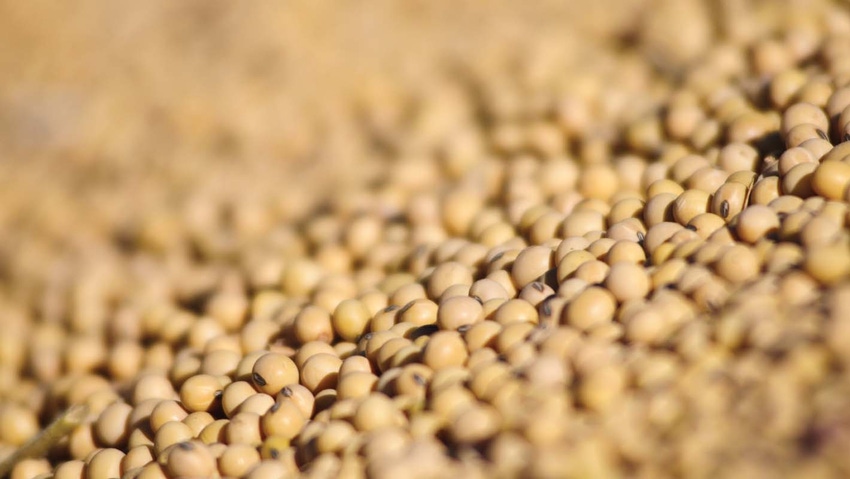
Finally, the soybean’s time has come. “I say internally here at Monsanto that this is the decade of the bean,” says Roy Fuchs, Monsanto oilseeds technology lead. “I believe the last decade was for corn when we moved from singles to doubles to triples [stacked traits] and we ended the decade with SmartStax. I think we will see the same transitions with soybeans.”
The major seed-breeding companies indicate they are developing healthy lines of new soybean products for growers in the next decade. Certainly there will be stacked soybeans arriving soon. Here’s a look at what the companies say about future products.
Monsanto
Monsanto expects to commercialize dicamba tolerance in mid-decade, Fuchs says. The dicamba-tolerance trait will be stacked with Roundup Ready 2 Yield soybeans, making it the first double-stacked soybean. The University of Nebraska developed the trait; Monsanto is licensing it.
Monsanto is collaborating with BASF on the chemistry of dicamba, Fuchs adds. “BASF has the newer versions of dicamba like Clarity. We will bring the [seed] technology to the marketplace and work with them on the chemistry side.”
A yield gene stack with Roundup Ready 2 Yield and dicamba-tolerance traits should come after the dicamba trait, depending on regulatory approvals. Fuchs adds that the gene was discovered after researchers tested thousands of genes in a joint project with BASF. The higher-yielding gene is in the broad testing stage.
Second-generation aphid-resistance research is under way at Monsanto. Fuchs says the first-generation product is available in a limited number of varieties.
Products to control soybean cyst nematode (SCN) and diseases like Asian soybean rust are in the early research stages.
SDA Omega 3 soybeans offer a more stable and healthy omega 3 oil derived from these soybeans. Fuchs says the SDA Omega 3 oil offers humans cardiovascular benefits. Plus, the SDA soybean oil is as stable as conventional soybean oil in food applications and doesn’t cause off flavors or have a fishy taste. The company expects global regulatory approvals in the next couple of years.
Vistive Gold is the second-generation Vistive soybean product in Monsanto’s pipeline. Vistive Gold offers three benefits, Fuchs says. First, as with Vistive, the oil doesn’t need to be hydrogenated, so there are no trans fats. Second, Vistive Gold soybeans have reduced saturated fat and high-oleic content in their oil. And third, it provides a highly stabile oil that can be used for frying and baking with no additional processing.
Pioneer Hi-Bred
Pioneer expects to commercialize Plenish high-oleic-oil soybeans in 2012, upon full regulatory approval and ongoing field testing. The line will be the company’s first biotech product in soybeans to offer benefits to farmers, industry and consumers, according to Nick Iwig, U.S. soybean marketing manager, strategy side.
Plenish is high-oleic soybean oil with more than 75% oleic content. “This is the highest oleic content of any soy product under commercial development and is similar to olive oil and has 20% less saturated fat content than commodity soybean oil,” Iwig says. “The enhanced stability of the soybean oil benefits the food industry. We will be able to provide higher heat stability for frying and also gain extended shelf life for manufactured products.”
The company expects acres of the high-oleic soybeans to be concentrated around soybean crush facilities, like those in Indiana and Ohio.
Optimum GAT, the glyphosate-tolerant trait, “is still on our radar,” Iwig reports. “It is our first choice as we look to expand our herbicide tolerance and we continue to pursue its commercialization. But to be honest, the stack is being delayed because of Monsanto’s failure to enable our regulatory review of that stack.” He says the company does not know when the product will be available for commercialization.
Aphid resistance is another seed product Pioneer plans to bring to the market in possibly two to five years, Iwig estimates. “Aphid resistance is something we’ve been working on in-house that is a native approach,” he says. “Evaluations are out in field this summer and we’re seeing good efficacy.”
SCN resistance continues to be a threat that growers talk a lot about, Iwig says, and to address this concern, Pioneer has been conducting research with native traits. Growers can expect to see native traits available in three to five years, Iwig says.
Next-generation multiple-mode herbicide tolerance is in Pioneer’s pipeline to help with the mounting weed resistance issues. The new modes of action are expected to be available in the second half of the decade.
Pioneer is licensing Dow AgroSciences’ new Enlist technology for multiple modes of action to manage glyphosate-resistant and hard-to-control weeds and is incorporating this technology into Pioneer’s Elite Genetics. (See Dow AgroSciences.)
Syngenta
An aphid-resistant trait was included in the Aphid Management System that Syngenta launched in 2010. The new Aphid Management System incorporates an aphid-resistant trait with CruiserMaxx seed treatment. For 2012, the system will now be available in many products within the NK portfolio. The company also is testing several experimental products for future launches.
An advantage of the Aphid Management System is convenience with the program’s season-long control of aphids, reports Quinn Showalter, product lead commercial traits. Syngenta guarantees its performance with an assurance program that will pay for an application of Endigo insecticide in the event of a severe aphid infestation where populations reach economic threshold.
HPPD herbicide tolerance is in Syngenta’s pipeline. “The most exciting thing coming in our pipeline is a collaboration with Bayer CropScience on an HPPD-herbicide-tolerant trait for soybeans,” Showalter says. “It is in early development and we expect it in the second half of the decade.”
Showalter says the HPPD trait will be a new tool for soybean growers faced with resistant weeds. HPPD is a class of chemistry widely used in corn for control of a large spectrum of broadleaf species as well as some grass species. Syngenta currently offers the chemistry in its Callisto brand family of products.
Dow AgroSciences
Dow AgroSciences is working on its Enlist Weed Control System that will be introduced in corn and soybeans. Part of the program will be 2,4-D tolerance that will provide growers with a “robust tolerance to a new 2,4-D product,” says Damon Palmer, U.S. commercial leader. The 2,4-D trait will be stacked with a glyphosate-tolerant trait including Roundup Ready 2 Yield in soybeans. The Enlist program is in the regulatory process now and should receive approval for corn in 2013 and soybeans by 2015.
“We’ve been working on this technology several years,” Palmer explains. “In March we unveiled the brand name for the technology.”
In addition to the 2,4-D-tolerant trait stacked with glyphosate tolerance, the Enlist Weed Control System includes a new herbicide solution that has not been named. “The solution features Colex-D technology that provides the applicator with some key attributes,” Palmer explains. “It has ultralow volatility, minimized potential for physical drift, lower odor, and better handling characteristics.”
And last, the Enlist program will include a “good stewardship plan…with a lot of education and dialogue to make sure growers have the right information to utilize the technology,” Palmer says.
Bayer CropScience
Bayer is working on new LibertyLink soybean varieties for the southern markets from the Hornbeck Seed Company breeding program. Bayer recently purchased the seed company, which breeds varieties mostly for the South. These varieties will be available in 2013, according to Andy Hurst, product manager for herbicide-tolerant traits.
The company also is working on a soybean triple stack that combines a tolerance to Balance herbicide with LibertyLink and glyphosate tolerance. Commercialization of this stack is in the 2015-2016 time frame. Balance is in the HPPD class of chemistry and will be complementary to Ignite and glyphosate, Hurst adds. The development of the triple stack including the Balance-tolerant trait is part of Bayer’s collaboration with M.S. Technologies, an Adel, IA, company that provides traits and high-yielding genetics.
Also in the Bayer pipeline is an SCN trait that is being developed from the Athenix Corporation pipeline, a biotechnology company Bayer purchased in 2009. Hurst says the new SCN trait will be combined with Bayer’s biological seed treatment Votivo to create a “phenomenal” nematode package.
About the Author(s)
You May Also Like






